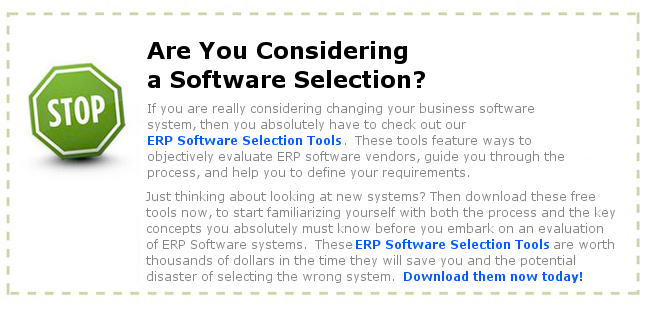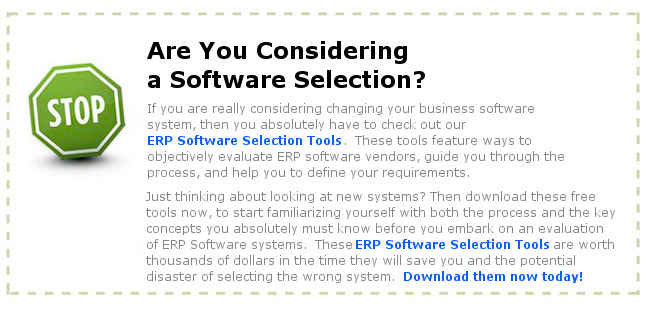Chris Shaul
Most of the news and information you hear on the web or read in print about ERP relates to SAP, Oracle and other large systems. There is a derth of information on ERP for the small shop or for the under 10 million dollar manufacturer. What then do people do when they have graduated from Peachtree or Quickbooks? Is it possible to get a complete integrated system that manages their entire operations and finance areas?
Well fortunately, there are a few solutions that will not break the bank and will provide end-to-end functionality for a small manufacturer or distributor. These softwares are surprisingly complete. In fact, there are often features and functionality that beat the main-stream big systems.
One such system is called IntegrateIT This system provides a well rounded set of features that allow the small manufacturer the ability to run the company with a complete understanding of what is in inventory, what am I making today, what should I buy today, where is my cash position and am I profitable? Surprisingly, this software has modules that many larger ERP systems do not have, such as Field Service. It is amazing the amount of power that these smaller systems have. This link is one such example of how this system saved a company thousands of dollars.
Another solution is DBA Software. Having gone through a major rewrite of their core solution, they are both complete in functionality and have a very current underpinning of technology. This solution provides a very easy to use system for the smaller firm.
What makes these systems perfect for the smaller enterprise? The fact that they get more done with fewer screens. On a mid-tier solution, there maybe 2 to 5 screens needed to process a transaction such as entering a voucher or creating a work order. These smaller solutions tend to do it in one to two screens with all the information you need at your fingertips. The idea is that in larger companies, there is a delegation of work. In the smaller company, you may have one person wearing many hats and they need efficiency in transaction processing.
So the when you are thinking of integrated software solutions, remember that big isn’t necessarily an answer. Amazing things often come in small packages.
Chris Shaul is a Sr. IT Consultant and specializes about ERP selections and implementations.

